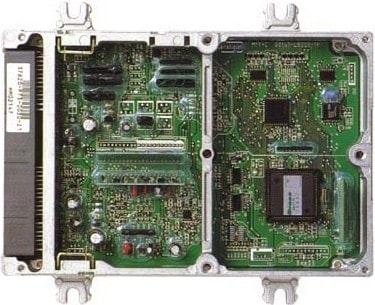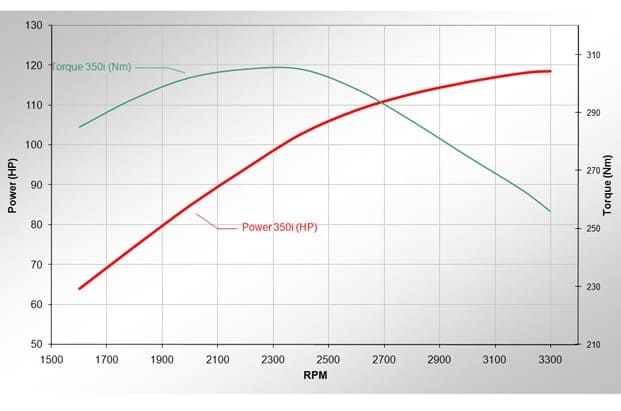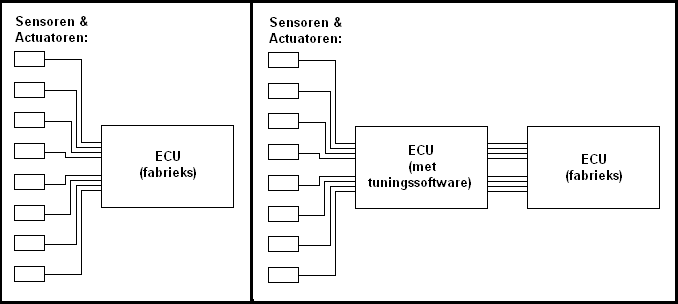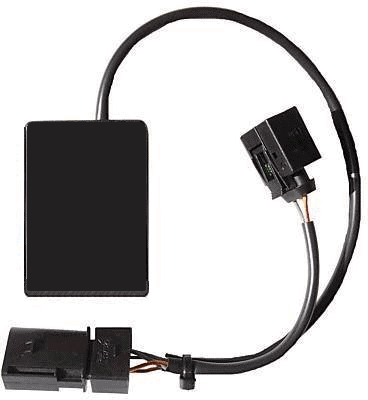Subjects:
- General
- Chiptuning
- Software chip tuning
- Replacement of original chip (hardware)
- Placing an extra ECU
- Powerbox
General:
With chip tuning, the code fields in the ECU (Engine Control Unit) modified to achieve higher power or lower consumption (called Eco-tuning).
The characteristics of the ignition, the turbo pressure and the composition of the air/fuel mixture are often adjusted.
Supercharged engines (turbo/compressor) are very suitable for chip tuning, both petrol and diesel engines. Atmospheric engines (which have to suck in the air themselves) are hardly suitable for chip tuning. The power and torque often only increase by a few percent, which is hardly noticeable while driving.

You may wonder why car manufacturers don't immediately give a car more power. The reason is usually that the settings have been deliberately chosen for the worldwide emission standards, or that one type of car has several engines with the same displacement, but with different powers. Tuning is a smart way to respond to this. After tuning, the car must of course still meet the legal emission standards.
Chip Tuning:
Adjust ignition map:
Every petrol engine has a specific ignition advance. With chip tuning, the limit of the pre-ignition is increased a little further.
As an example: On a particular engine with factory software, the ignition advance varies between 30 and 40 degrees BDC at 4700 rpm. When increasing speed to 5000 rpm. the engine will go to 0 degrees pre-ignition.
The tuner will set the limit at 5000 rpm. increase it to, for example, 5200 rpm. and only switch to 0 degrees pre-ignition from this speed. This results in a power gain, because the combustion pressure is higher at this speed.
Turbo pressure:
By increasing the maximum turbo pressure, a larger amount of air enters the cylinders. By adjusting the fuel quantity (injection time) to this, strong power gains are achieved. Turbo pressure is controlled by the Waste-gate. This valve opens at a certain pressure (eg 0,8 bar). The tuner will increase this pressure to eg 1 bar. The valve will only open when a filling pressure of 1 bar has been reached.
Injection Time:
By adjusting the injection time, a larger amount of fuel can be supplied to the incoming air. When the turbo pressure is increased (more air flowing in) and more fuel is injected, there is a lot of power gain.
Not only the characteristics of the ignition, the turbo pressure and the injection time have to be adjusted, but also the characteristics of all sensors and actuators of the engine.
As an example the knock sensor: If the characteristics of this are not changed, this knock sensor will react to the injection time that does not correspond to the factory values. This produces an error code in the ECU (and it can end up in an emergency program). Each map field of each sensor must therefore be programmed to the adjustments that have been made.
Software chip tuning:
Nowadays all chip tuning is loaded into the ECU software. Via the OBD plug, the software is read from the ECU of the car, adjusted and then loaded again.
Many tuners offer complete packages for various engine types. This software has been extensively tested and stored.
When the owner of the car has made adjustments to the engine himself (think of a larger turbo, larger intercooler, other injectors, etc.), a new tuning program must be written. Usually the car is then put on a dynamometer. The values in the ECU are read and processed. By subsequently taking power measurements again, the graphs of the power and torque curves can be used to see whether the desired results have been achieved. If the torque or power line has a sharp drop somewhere, it could indicate bad programming. By adjusting the software a number of times and making a new test run, a pure power and torque curve will be created (see image).

Replacement of original chip (hardware):
The original chip is removed from the ECU and a new chip is soldered in with the tuning software already pre-programmed. These chips cannot be programmed from the OBD plug. However, this is already an older technique and is no longer applied to the current new cars.

Placing an extra ECU:
With this tuning method, a separate ECU with a cable set is supplied. The original ECU is retained and an additional ECU with tuning software is connected. The wiring kit is simply a loop-through system between two ECUs. This technique is nowadays increasingly common in tuning of Volkswagen, among others. The diagram on the left shows the original ECU and on the right the ECU with tuning software linked to the original ECU.

Power box:
A power box is usually the cheapest, but the worst way to tune. The power box manipulates the input signals to the ECU. This means that the signals that the sensors send to the ECU are changed. Usually the signals of the fuel (rail) pressure, the temperature sensors and the air mass meter are converted. The consequences are, among other things, that the fuel pressure / rail pressure increases too much and that the air/fuel ratio is no longer correct because the air mass meter signals have been adjusted.
The power will have increased slightly (less than with chip tuning), but the lifespan of the engine parts decreases sharply. The internal pollution in the engine will also increase. A power box is therefore not recommended.

Related pages:
